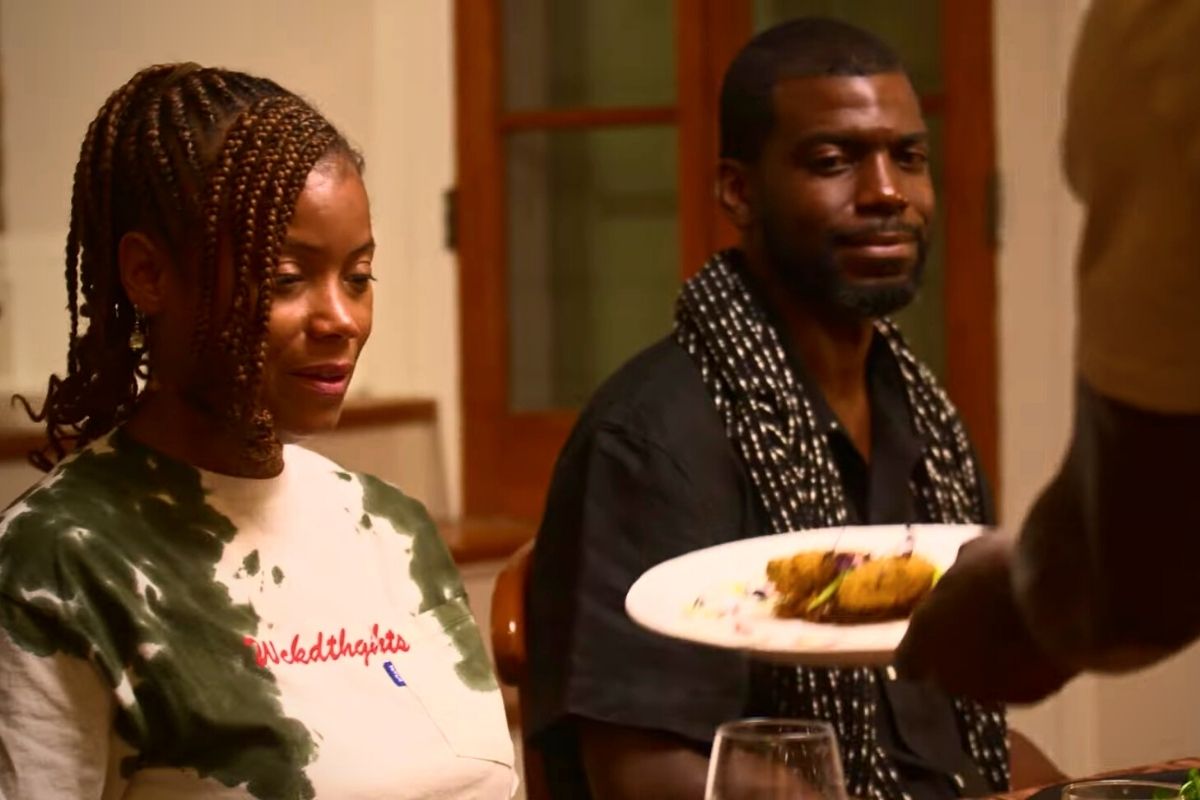One of the Best Docuseries on Netflix Just Quietly Dropped a Second Season
Brain food, soul food.

One of the most underrated and hunger-inducing TV shows out there is the Netflix original docuseries High on the Hog. The show traces the history of Black American food (the foundation for many American cuisines) and is now back for season two just in time for the holidays.
Hosted by writer and sommelier Stephen Satterfield, HOTH bases its premise on the 2011 book by culinary history Jessica B. Harris, High on the Hog: How African American Cuisine Transformed America. During episode one, Harris also makes an appearance during the 10-person crew’s time in Benin. The first season starts in West Africa before exploring the food histories of the Carolinas and Virginias later on. This includes food, recipes, and political history for things like okra, yams, Carolina rice, whole hog, and mac & cheese.
After hopping around the east coast, the 2021 show ends on Juneteenth in Texas for BBQ and dessert. One stop in that episode is at a rodeo, to talk to famous country singer and cowboy Larry Callies. Last Juneteenth, I trekked across town to visit his Black Cowboy Museum and Callies is just as open to the crew in the show as he is to anyone he meets with an interest in history.
One of the biggest omissions in the first season was how food and cultures of the Indigenous peoples factored into many of these dishes and traditions. After all, there’s no cornbread, for example, without corn, a.k.a. maize. Additionally, there’s many farming techniques and cooking methods shared in this forced proximity due to European colonization. I’m hoping season two will tackle this shared history in more depth.
High on the Hog season 2
Executive producer Karis Jagger previously revealed that they edited out the New Orleans portion of season one. However, previewing the episode list for season two, it’s apparent we’re getting it here! Like season one, HOTH is following a four-episode, 50-ish-minute format. First, it looks to start with New Orleans cuisine and the food of the Great Migration in Chicago. Then, the show travels to Harlem and, later, to the cooks who fed the Civil Rights Movement. The final episode centers around food and the Black Panther Party. This last one is an interesting pick because it goes to show how to show expands beyond food and recipes, but also the acquisition, too.
The BPP began a national free breakfast program for kids of all races to reduce food hunger and insecurity. Not only does this feed those in need, but kids perform better in school when they’re not learning hungry. BPP co-founder Bobby Seale believed that people could not be free unless they had free access to basic things needed to survive.
In Mary Potori’s 2017 article “Feed the Revolution,” she wrote that many Marxists and socialists recognized that “revolution may be mandated and justified by the starving masses, but it certainly could not be waged by them. Panther food programs thus empowered the people both physically and politically.” To undermine the BPP and garner politic support, the government rapidly expanded these programs, and we still use them today.
Because I just learned about the new season dropping and refuse to watch an episode unless I’m eating, I’m haven’t watched HOTH season 2 yet. If it’s anything like the first season, you’re going to want to do the same.
(featured image: Netflix)
The Mary Sue may earn an affiliate commission on products and services purchased through links.
Have a tip we should know? tips@themarysue.com